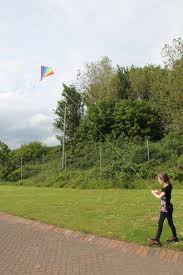Description
Flying Leader: The Visionaries Who Propel Innovation in Aviation
A "Flying Leader" is a term that has evolved in aviation to represent a highly skilled individual or a team member who leads the charge in innovative and visionary flight operations, often in both commercial and military contexts. While the term is not universally defined, it encapsulates a combination of leadership, expertise, and a deep understanding of aviation. Flying Leaders are often at the forefront of technological advancements, safety improvements, and operational strategies that push the boundaries of flight.
In this article, we explore the concept of a Flying Leader, their role in shaping aviation history, and how they continue to influence the future of flight.
The Role of a Flying Leader
The core responsibility of a Flying Leader involves more than simply piloting an aircraft; it is about setting the direction for the broader goals of the team or organization. Flying Leaders are responsible for maintaining the highest standards of operational excellence while inspiring their teams to reach new heights of efficiency, safety, and technological integration.
In a military context, Flying Leaders often hold the rank of an officer or commander, overseeing the strategic planning and execution of air missions. They must balance mission objectives with the safety of their crew and the proper deployment of aviation technology. Their role is to make rapid, informed decisions in high-stress environments, guiding their units through complex tactical situations.
In commercial aviation, Flying Leaders may be airline captains, chief pilots, or senior operational managers who work to ensure that both flight operations and customer service are conducted to the highest standards. They may be responsible for everything from managing in-flight teams to implementing new protocols for sustainable flight practices or integrating cutting-edge technologies into their fleets.
A Historical Look at Flying Leaders
The legacy of Flying Leaders is rich with pioneers who have reshaped the aviation industry. From the Wright brothers to modern-day commercial airline captains, Flying Leaders have continually pushed the boundaries of flight.
1. The Pioneers: The Wright Brothers The first true Flying Leaders were, without a doubt, Orville and Wilbur Wright, the brothers who invented and flew the first successful airplane in 1903. Their leadership in aviation innovation paved the way for all future advancements in flight. By tirelessly refining their designs and testing their theories, they demonstrated that leadership in aviation involves a combination of scientific inquiry, technical expertise, and perseverance.
2. World War I and II: The Military Leaders The role of Flying Leaders became even more pronounced during both World Wars. During World War I, aviators like Eddie Rickenbacker of the U.S. and Manfred von Richthofen (the "Red Baron") of Germany exemplified the tactical and leadership abilities required to succeed in the rapidly evolving world of air combat.
During World War II, figures like Chuck Yeager, who famously broke the sound barrier, and Jimmy Doolittle, a key figure in the Doolittle Raid on Japan, showcased leadership not only in the air but in groundbreaking technological and tactical innovations. Flying Leaders in the military context became central figures in strategizing air superiority, fostering new flight techniques, and ensuring the success of critical missions.
3. Modern Day Aviation Leaders In modern aviation, Flying Leaders are often associated with major technological advancements and innovations. These include the adoption of fly-by-wire systems, autopilot technology, and carbon-neutral aviation. Leaders in the commercial aviation industry, such as Herb Kelleher, co-founder of Southwest Airlines, have reshaped how airlines operate with a focus on efficiency and customer care. Their leadership goes beyond just piloting aircraft; it extends to ensuring the smooth operation of an airline and setting the tone for corporate culture.
Flying Leaders and Technological Innovation
One of the most exciting aspects of being a Flying Leader in today's world is the ability to influence aviation’s future through new technologies. With aviation being one of the most dynamic fields in terms of technological innovation, Flying Leaders are uniquely positioned to bring these advancements from the drawing board into reality.
1. Autonomous Flight and Artificial Intelligence One of the most significant developments in aviation today is the integration of autonomous flight technologies. Flying Leaders are key in overseeing the transition to AI-driven aircraft. From fully autonomous drones to self-piloting commercial airplanes, leaders in aviation are helping to shape policies and strategies to integrate this technology safely into the airspace. This will require Flying Leaders not only to be familiar with the mechanics of the technology but to have the foresight to anticipate regulatory and safety challenges that may arise.
2. Sustainable Aviation As the aviation industry faces increasing pressure to reduce its carbon footprint, Flying Leaders are at the forefront of developing strategies for sustainable aviation. This includes the development of electric planes, sustainable aviation fuels (SAFs), and more efficient flight operations. Visionary leaders, such as Embraer CEO Francisco Gomes Neto and Airbus’s Chief Technology Officer Grazia Vittadini, are championing projects to revolutionize how airplanes are designed and powered.
Flying Leaders must also be instrumental in navigating the regulatory landscape surrounding sustainable aviation, ensuring that innovations are not only technically feasible but also safe and cost-effective.
The Key Qualities of a Flying Leader
What makes a successful Flying Leader? While each individual has their own approach, certain qualities are universally important in this role:
Expertise and Skill: A Flying Leader must possess exceptional flying skills, technical knowledge, and a deep understanding of aviation principles. Whether in military or commercial settings, their abilities must inspire trust in their team.
Decision-Making: Aviation leaders must often make rapid decisions in high-pressure situations, especially during emergencies or critical flight operations. Their ability to assess risk, weigh options, and take decisive action can save lives and protect valuable assets.
Visionary Thinking: The best Flying Leaders are forward-thinking and embrace new technologies and ideas. They must anticipate trends in aviation and lead efforts to improve safety, efficiency, and sustainability.
Team Leadership: The ability to work cohesively with other crew members, staff, and management is essential. Flying Leaders must be excellent communicators, motivators, and mentors to ensure smooth operations.
Commitment to Safety: Above all, a Flying Leader prioritizes safety in all aspects of aviation. Their leadership helps foster a safety culture that ensures every team member is committed to keeping both passengers and crew safe.
Conclusion: The Future of Flying Leadership
As we look toward the future of aviation, the role of Flying Leaders will only become more complex and more crucial. With rapid advancements in technology, sustainability efforts, and new aviation regulations, the leaders of the skies will be the ones who steer the industry into new eras of flight.
Flying Leaders are not just pilots; they are innovators, strategists, and mentors. Their influence extends beyond the cockpit, affecting the future of air travel, military aviation, and technological advancement in the skies. As aviation continues to evolve, the importance of strong leadership will remain paramount in ensuring that flight remains safe, efficient, and innovative for generations to come.
Amenities (Facilities)
- Tour Package
- Visa Checklist
- Train Enquiry
Photos
Contact Information
| Address |
3rd Floor, Citi Square, SCO 04, Patiala Rd, Sahibzada Ajit Singh Nagar, Zirakpur, Punjab 140603 |
| Phone Number |

+91 9815674600 |

+91 7717305772 |
|
| Email Address |
info@flyingleader.com |
| Website // URL | https://www.flyingleader.com |









